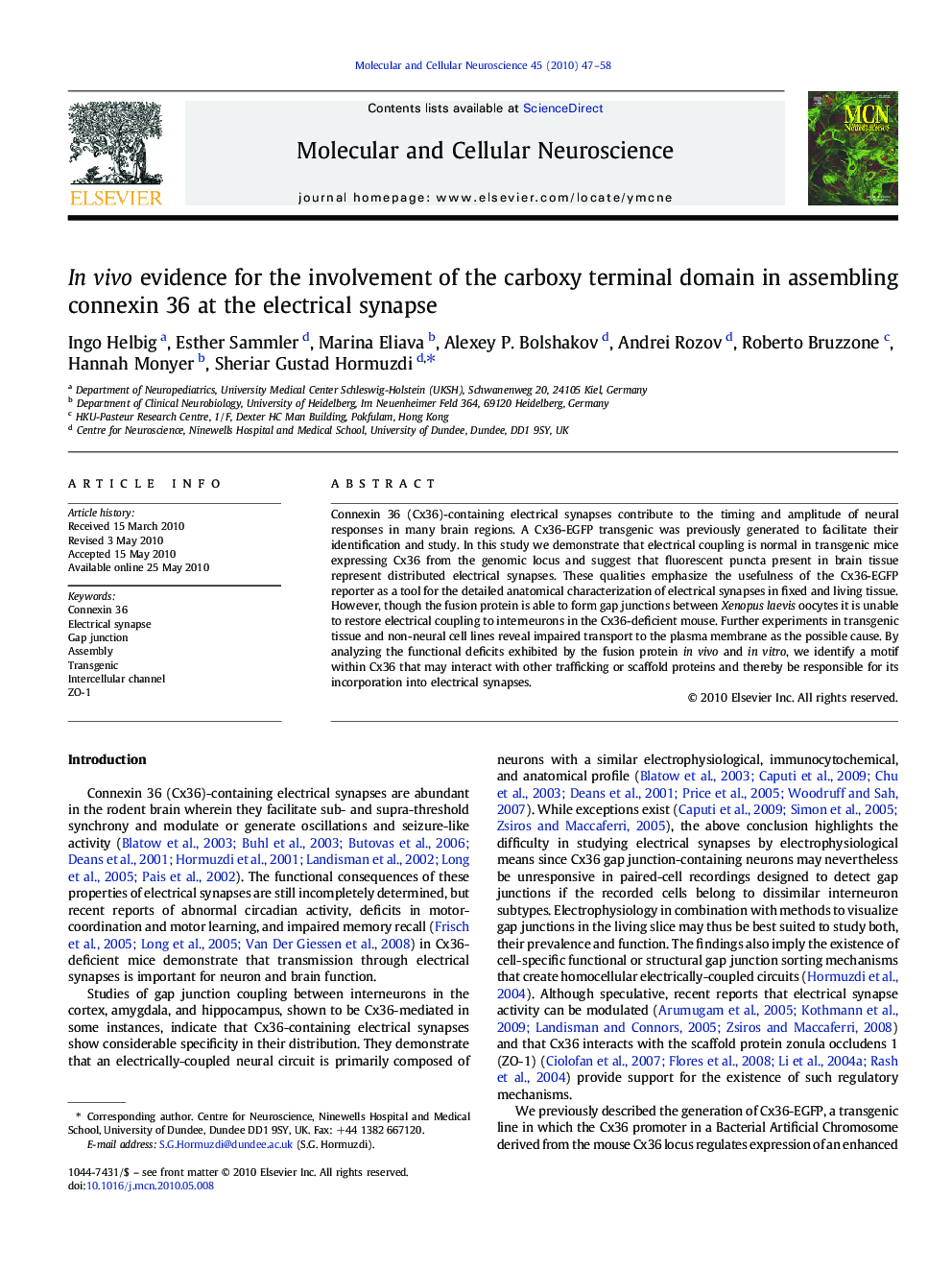| Article ID | Journal | Published Year | Pages | File Type |
|---|---|---|---|---|
| 10956693 | Molecular and Cellular Neuroscience | 2010 | 12 Pages |
Abstract
Connexin 36 (Cx36)-containing electrical synapses contribute to the timing and amplitude of neural responses in many brain regions. A Cx36-EGFP transgenic was previously generated to facilitate their identification and study. In this study we demonstrate that electrical coupling is normal in transgenic mice expressing Cx36 from the genomic locus and suggest that fluorescent puncta present in brain tissue represent distributed electrical synapses. These qualities emphasize the usefulness of the Cx36-EGFP reporter as a tool for the detailed anatomical characterization of electrical synapses in fixed and living tissue. However, though the fusion protein is able to form gap junctions between Xenopus laevis oocytes it is unable to restore electrical coupling to interneurons in the Cx36-deficient mouse. Further experiments in transgenic tissue and non-neural cell lines reveal impaired transport to the plasma membrane as the possible cause. By analyzing the functional deficits exhibited by the fusion protein in vivo and in vitro, we identify a motif within Cx36 that may interact with other trafficking or scaffold proteins and thereby be responsible for its incorporation into electrical synapses.
Related Topics
Life Sciences
Biochemistry, Genetics and Molecular Biology
Cell Biology
Authors
Ingo Helbig, Esther Sammler, Marina Eliava, Alexey P. Bolshakov, Andrei Rozov, Roberto Bruzzone, Hannah Monyer, Sheriar Gustad Hormuzdi,
